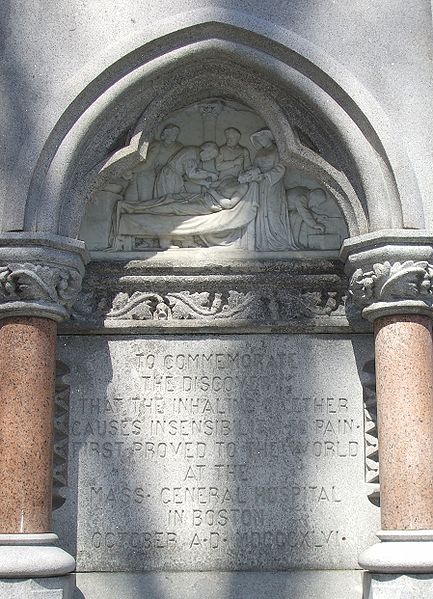History of general anesthesia
Throughout recorded history, attempts at producing a state of general anesthesia can be traced back to the writings of ancient Sumerians, Babylonians, Assyrians, Egyptians, Indians, and Chinese. Despite significant advances in anatomy and surgical technique during the Renaissance, surgery remained a last-resort treatment largely due to the pain associated with it. However, scientific discoveries in the late 18th and early 19th centuries paved the way for the development of modern anesthetic techniques.
Re-enactment of the first public demonstration of general anesthesia by William T. G. Morton on October 16, 1846, in the Ether Dome at Massachusetts General Hospital, Boston. Surgeons John Collins Warren and Henry Jacob Bigelow are included in this daguerrotype by Southworth & Hawes.
The Bulfinch Building, home of the Ether Dome
Opium poppy, Papaver somniferum
Hua Tuo, Chinese surgeon, c. AD 200
Diethyl ether, or simply ether, is an organic compound in the ether class with the formula C4H10O, (CH3CH2)2O or (C2H5)2O, sometimes abbreviated as Et2O. It is a colourless, highly volatile, sweet-smelling, extremely flammable liquid. It is commonly used as a solvent in laboratories and as a starting fluid for some engines. It was formerly used as a general anesthetic, until non-flammable drugs were developed, such as halothane. It has been used as a recreational drug to cause intoxication.
The first use of ether in dental surgery, by Ernest Board.
Panel from Ether Monument in Boston commemorating Morton's demonstration of ether's anesthetic use.
An illustration depicting ether's effects, 1840s–1870s







